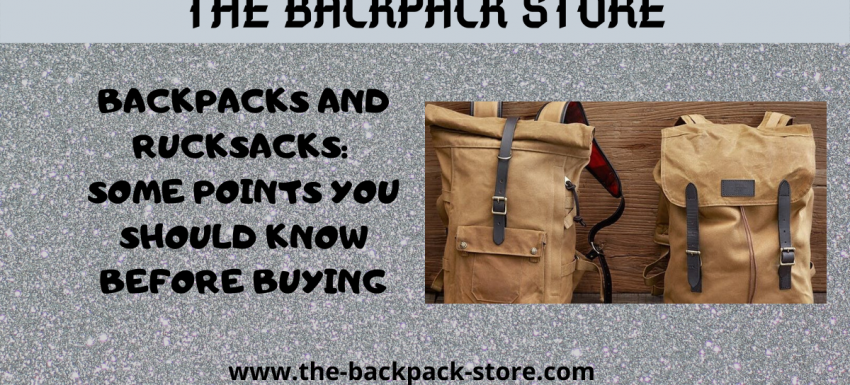Backpacks – known in Europe more commonly as rucksacks – are a key piece of walking equipment – but with so many on the market, which do you go for? This article aims to give some helpful hints on choosing the right one for you.
Backpacks (I’ll call them this for the sake of convenience) come in many different sizes, materials, weights and colours. You are simply spoilt for choice. The right backpack for you will largely be determined by what kind of outdoor activity you undertake and, like most pieces of personal equipment, getting it right can make a lot of difference to the fun you get out of your day. Let’s look at some different types.
Small backpacks – sometimes known as daysacks – are typically made of lightweight nylon and have a capacity of 20-35 litres. They are usually fitted with a pair of padded shoulderstraps and may have a couple of outside pockets fitted with zip closures. The main bag should have a drawstring with a stay-tight sliding toggle fitted and a top flap fastened by a couple of click-buckles. This type of backpack isn’t normally reinforced in any way.
These are fine for taking a day’s walk in fine weather in gentle countryside. The nylon is usually showerproofed but won’t keep out a real downpour – it’s not intended to. This size backpack will hold a packed lunch, a bottle of water and your jacket, with the side pockets handy for gloves, keys and the like. It will be very light and should be easy to carry – look for well-padded shoulder straps!
Medium backpacks normally have a capacity of between about 45 to 90 litres. The material is usually again nylon, although of a heavier grade than the daysack. They will again have the main bag, two or more exterior pockets that should have storm flaps in addition to the zip fasteners, and are far more weatherproof than the daysack. The main bag will again be closed by the drawstring and stay-tight toggle but the top flap will be thicker and far more water resistant. It may also include a pocket as well and there’s usually ice-axe straps fitted to the outside back of the backpack, together with various ‘d-loops’ for attaching a tent or sleeping bag. This size of backpack is suited to more serious trekking with maybe a night or two out.
Large backpacks are generally in the range of 100 – 150 litres (and that’s big!) but in construction are similar to medium backpacks, though they obviously have more room and more pockets. This size of backpack is normally only used on serious hikes that may last many days and will hold just about everything you will need for this kind of extended expedition.
Medium and large backpacks can be had in a variety of material weights, from fairly light nylon up to really thick cordura-type material that is very tough indeed. They can also be fitted with waterproof liners though many now come with ‘Gore-Tex’ type lining as standard. The weight and durability of material is determined by conditions you think you might experience – there’s no point getting a backpack that will stand an Arctic winter if you normally go hiking in Nevada in the summer!
The other thing that is normally fitted to larger backpacks is a waistbelt and, on some, a chest stabiliser strap. These are not for show – they make a huge difference to your comfort and stamina when walking. In older-type backpacks the belt was an added-on item – in modern backpacks it’s built-in. Wear it as tight as is comfortable. It should sit on the hips and these will then take a lot of the weight from your shoulders – the shoulder straps become more like stabilisers, aided by the cheststrap, and keep the backpack in place. Large backpacks often have a rigid internal frame to stop sagging – this is also a real boon on a long hike.
Another feature to look for, especially if you’re planning to walk in summer or hotter areas, is an ‘aeroback’ design. This is a rigid plate that forms the part of the backpack nearest your back. It’s curved slightly away from your back and holds the backpack in such a position that air can circulate, helping to avoid the ‘soaked shirt syndrome’. I have one myself. They’re great.
One other thing to remember. When you go to buy your backpack, take all the clothing and equipment you think you will need for your kind of hiking. If it doesn’t fit the backpack you first look at, try a bigger one! Nothing is more frustrating than trying to cram everything into a too-small sack. Things break, bottles burst – you get the picture.
In summary, always get the best backpack you can afford and perhaps one size bigger than you think you might ever need. It’s surprising how things mount up! Visit a reputable outdoors retailer and don’t be shy about trying several out until you find one that really feels ‘right’ for you. You’re going to be together for a while – take your time and you’ll find your backpack really is the best friend you can have on a hike.
Article Source: Backpacks And Rucksacks: Some Points You Should Know Before Buying






